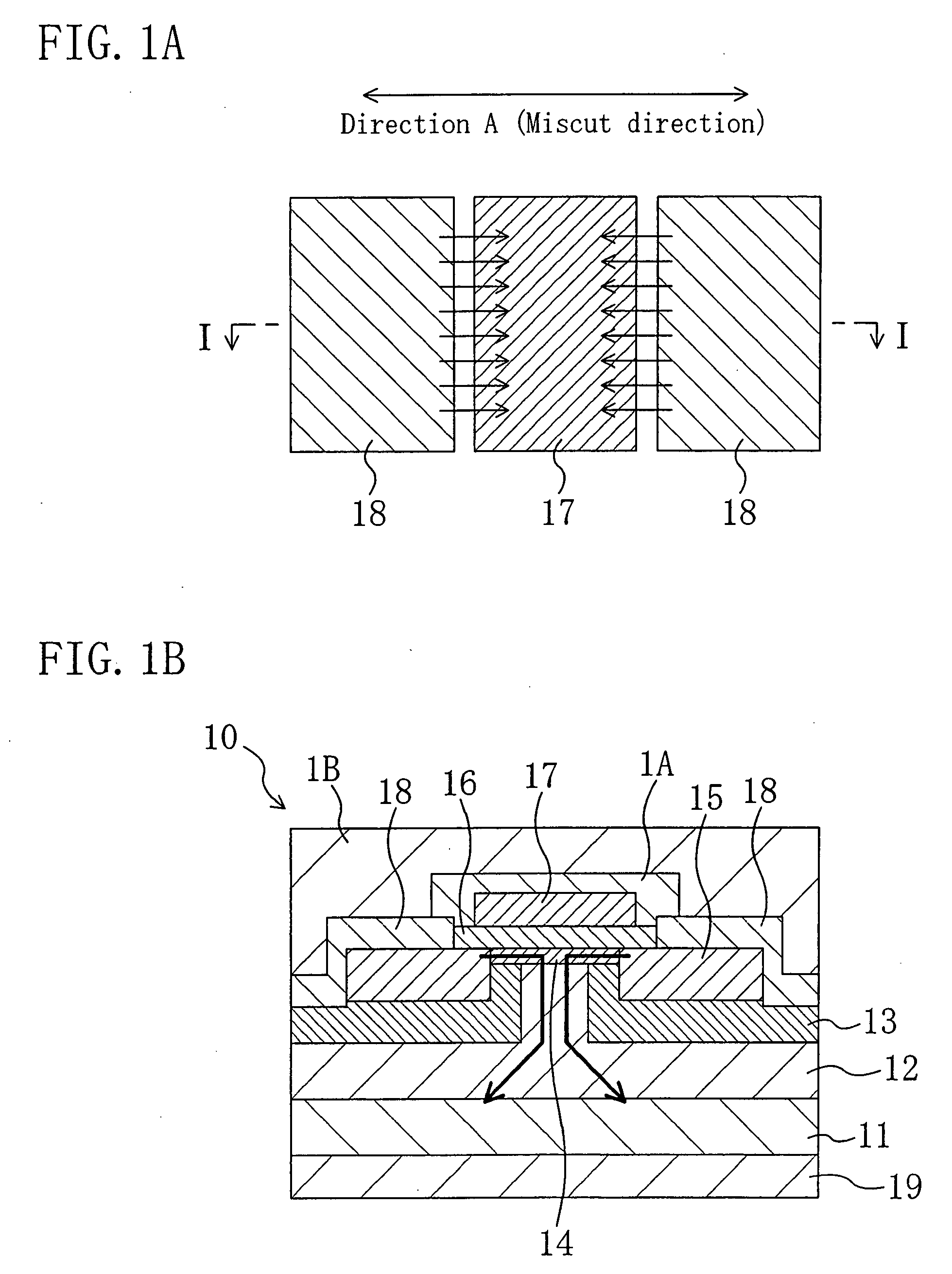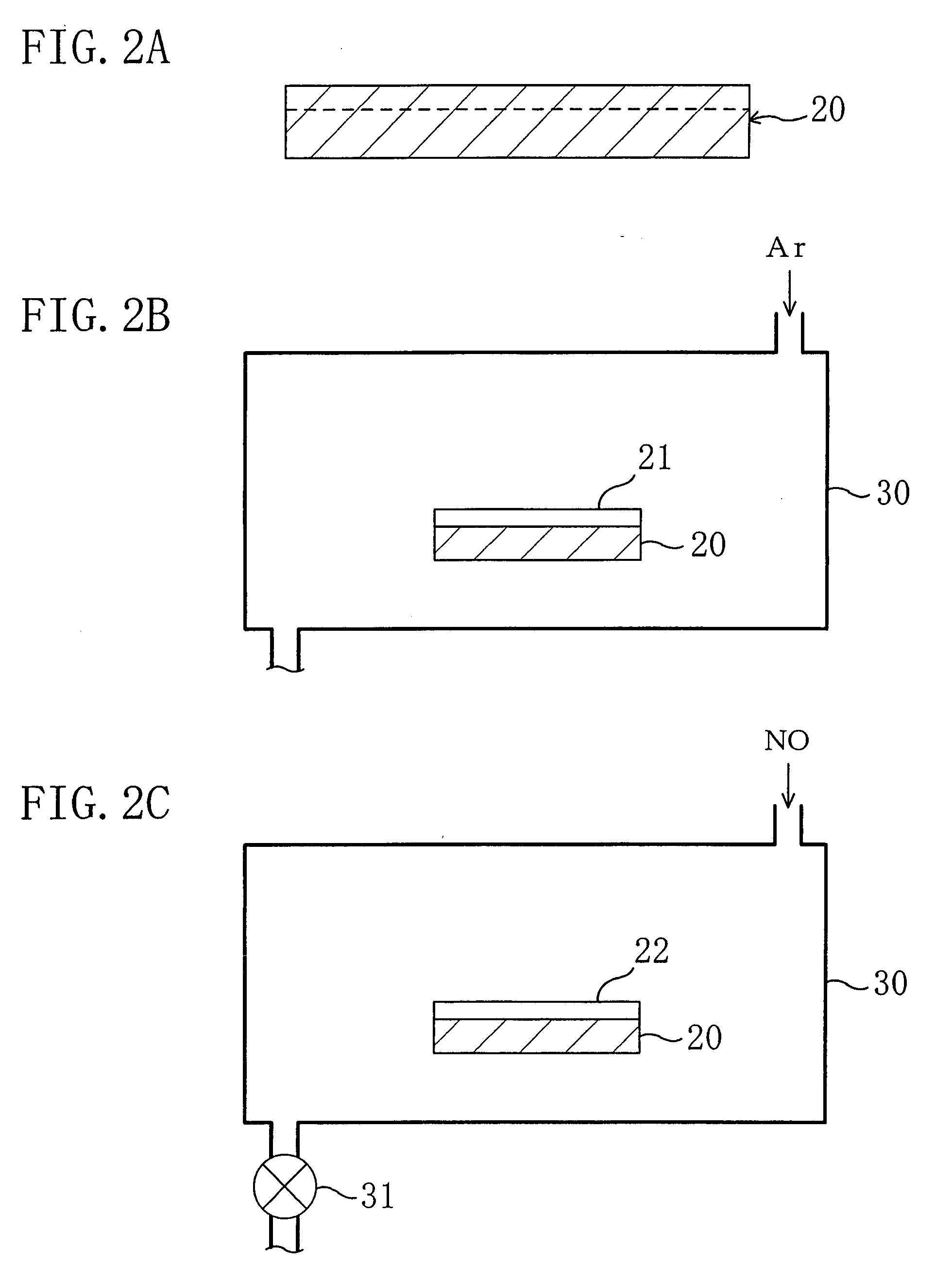High-breakdown-voltage insulated gate semiconductor device
a technology of high-breakdown voltage and semiconductor devices, applied in the direction of semiconductor devices, basic electric elements, electrical equipment, etc., can solve problems such as anisotropy of electrical characteristics, and achieve excellent electrical characteristics and reduced electron mobility
- Summary
- Abstract
- Description
- Claims
- Application Information
AI Technical Summary
Benefits of technology
Problems solved by technology
Method used
Image
Examples
embodiment 1
[0104] FIGS. 1(a) and 1(b) are cross-sectional views showing a joint between two unit cells of typical vertical accumulation-mode MOSFETs using a silicon carbide layer in a first embodiment. FIG. 1(a) is a plan view showing some of electrodes of the MOSFETs, and
[0105]FIG. 1(b) is a cross-sectional view taken along the line I-I in FIG. 1(a).
[0106] As shown in FIGS. 1(a) and 1(b), a semiconductor device of this embodiment has an n+-type 4H-SiC(0001) semiconductor substrate 11. The semiconductor substrate 11 has a surface miscut by approximately 8 degrees in the direction, and its resistivity is approximately 0.02 Ωcm2. An n-type 4H-SiC(0001) silicon carbide layer 12 is formed on the semiconductor substrate 11 to have a thickness of approximately 15 μm and doped with nitrogen at a concentration of 3×1015 cm−3. The n-type silicon carbide layer 12 is formed on the semiconductor substrate 11 by epitaxial growth, and the influence of the semiconductor substrate 11 causes the top surface...
embodiment 2
[0150] FIGS. 11(a) and 11(b) are cross-sectional views showing typical lateral accumulation-mode MOSFETs using a silicon carbide layer according to a second embodiment. FIG. 11(a) is a plan view showing some of electrodes of the MOSFETs when seen from above, and FIG. 11(b) is a cross-sectional view taken along the line VII-VII in FIG. 11(a).
[0151] As shown in FIGS. 11(a) and 11(b), a semiconductor device of this embodiment has a semi-insulating 4H-SiC(0001) semiconductor substrate 71. The semiconductor substrate 71 has a surface miscut by approximately 8 degrees in the direction. A 4H-SiC(0001) p-type silicon carbide layer 72 is formed on the semiconductor substrate 71 to have a thickness of approximately 5 μm and doped with aluminum at a concentration of 5×1015 cm−3.
[0152] An n-type channel layer 74 is formed in the middle region of the upper part of the p-type silicon carbide layer 72. In this embodiment, the channel layer 74 is a δ-doped layer obtained by alternately stacking ...
PUM
 Login to View More
Login to View More Abstract
Description
Claims
Application Information
 Login to View More
Login to View More - R&D
- Intellectual Property
- Life Sciences
- Materials
- Tech Scout
- Unparalleled Data Quality
- Higher Quality Content
- 60% Fewer Hallucinations
Browse by: Latest US Patents, China's latest patents, Technical Efficacy Thesaurus, Application Domain, Technology Topic, Popular Technical Reports.
© 2025 PatSnap. All rights reserved.Legal|Privacy policy|Modern Slavery Act Transparency Statement|Sitemap|About US| Contact US: help@patsnap.com



